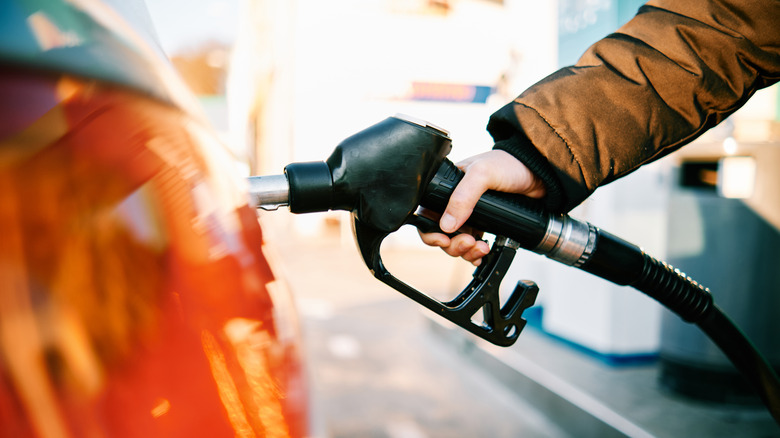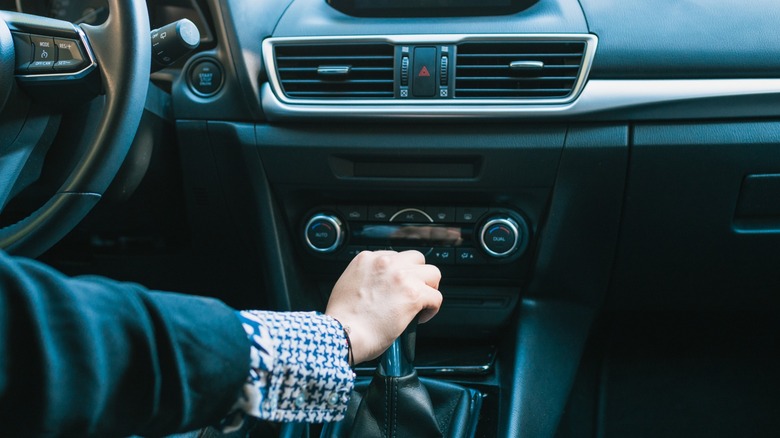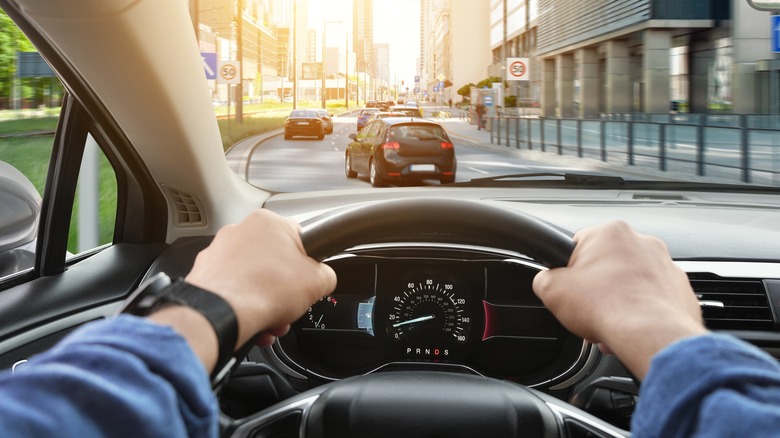Does Coasting Or Engine Braking Actually Help You Save On Gas?
A lot of people don't realize it, but your driving habits are actually making you spend more on gas. Now, a lot of car experts like to dish out advice on saving money at the pump — one of the most popular tips is filling up your tank early in the morning. The logic is that when it's cooler, gas is denser, so filling up early in the morning should give you a bit more fuel. Unfortunately, that's just a myth. Gasoline is stored in underground tanks where the temperature stays pretty steady, so filling up at dawn won't really make a difference.
Another common recommendation is to use fuel economizers: those gadgets or additives that promise you better gas mileage. The truth is, most of them don't work. The Environmental Protection Agency (EPA) tested over 100 of these products and found that they're largely ineffective, and some can even distort your car's emissions system. So, instead of saving money, a lot of these fuel-efficiency tricks end up costing you more money in the long run.
So, what are the best ways to use less gas while driving? It all comes down to how you drive. We know that maintaining a steady speed and accelerating gently certainly helps. However, some drivers claim that driving techniques like coasting and engine braking help them save on fuel. But do these really make a difference? Keep reading to find out why coasting might actually be dangerous, how engine braking could be the more fuel-efficient alternative, and actual tips on efficient ways to manage fuel while you're driving.
What's the difference between coasting and engine braking?
Coasting and engine braking perform the same function: they are both ways to control your car's speed without you having to step on the brake pedal. Yet, they work quite differently. Coasting occurs when you shift gears into neutral or hold down the clutch. By doing so, you've disengaged the engine from the wheels. In this state, your car moves purely on the momentum it has gathered, without any resistance from the engine. While some people believe this saves fuel, your car is actually still using some gas as the engine idles.
Engine braking, on the other hand, is slowing down by taking your foot off the accelerator while the car is still in gear. The engine is still connected to the wheels, and its natural resistance helps control the car's speed. This method is relatively more fuel-efficient, since easing off the accelerator while the car is in gear cuts off the air and fuel supply to the engine.
With coasting, you actually have less control over the car since the engine isn't connected to the wheels and isn't directly involved in helping you speed up or slow down. However, engine braking gives you better control over your speed, especially when going downhill. It also reduces wear and tear on your brakes since you're not relying on them as much. Plus, since the engine is still engaged, you're ready to accelerate quickly if you need to.
Coasting is actually more dangerous
Now, you know that when you coast in neutral, your engine stays idling and actually still burns fuel, but coasting is also risky. In an emergency, you might need to accelerate quickly to avoid danger. If you're coasting in neutral, there's a slight delay as you re-engage the gear, and as you may well know, every second counts in tight situations. Coasting can also affect the car's general handling and how it steers. That's why you'd find that many driving guidelines and owner's manual advise against this.
Instead, you can use engine braking when descending long or steep hills, as well as when approaching stops or slowing traffic. If you keep placing constant pressure on the brakes, they can overheat and generally become less effective, resulting in a condition known as brake fade. However, easing off the accelerator and letting engine braking slow you down when necessary can be more fuel-efficient and gentler on your brakes.
When using engine braking, it's important to use the right gear. Downshifting to a lower gear that matches your speed increases the engine's resistance and slows you down more effectively. However, avoid downshifting to too low a gear at high speeds because that only places unnecessary strain on your transmission and engine components. Some automatic cars have a manual mode or specific settings like "L" (Low) or "S" (Sport), which can help you achieve what you might intend with engine braking. Check your owner's manual to understand how to use these features properly.
More efficient ways to save fuel while driving
There's plenty of advice out there on how to save on gas, but most of it is just fluff. What actually makes a difference are the small, easy habits that you probably don't pay enough attention to. First of all, stop driving aggressively. You might think that stepping hard on the accelerator gets you where you're faster, but you're actually just wasting fuel. So, try to maintain a steady pace and avoid stopping and starting suddenly. Each time you slam the brakes or pick up the pace too fast, your engine has to work harder to regain momentum, and that costs fuel— by as much as 30% more.
Another tip is to check your tires regularly and make sure they don't drop below the recommended pressure level in your owner's manual. Ideally, a warning light should flash on your dashboard when the tire pressure is running low. If the pressure drops too low, you'll start to get bumpy rides. Besides that, low tire pressure creates more friction with the road, making your car burn more fuel.
Also, don't be scared of turning on the air conditioner on hot days. When you're driving over 80 km/h, it's actually more fuel-efficient to turn on the A/C instead of opening the windows. That's because leaving the windows open at that speed creates drag, which ultimately leads to higher fuel consumption. Lastly, don't carry more weight than you need. The heavier the car, the more fuel it burns. Simple changes like these add up to real gas savings.



